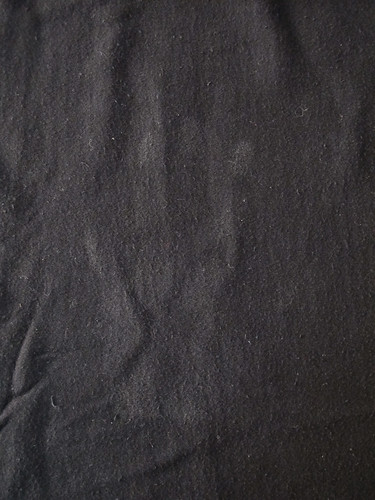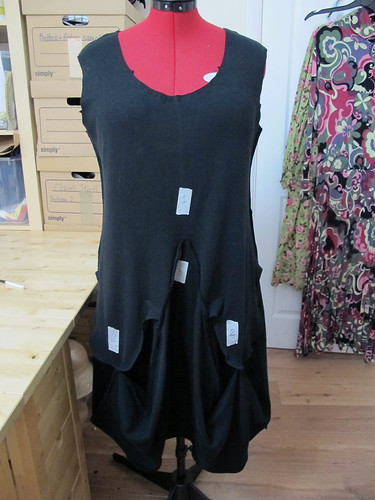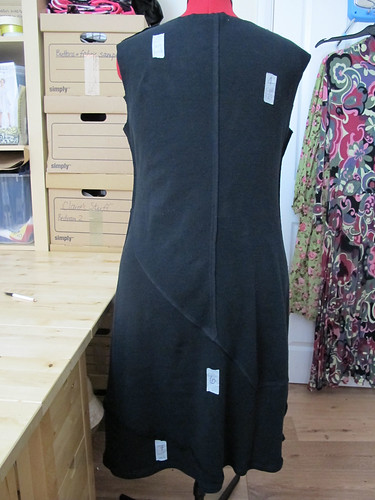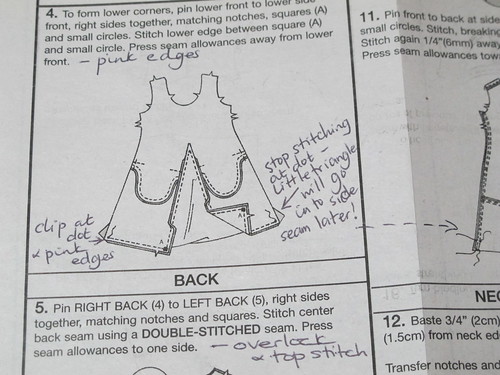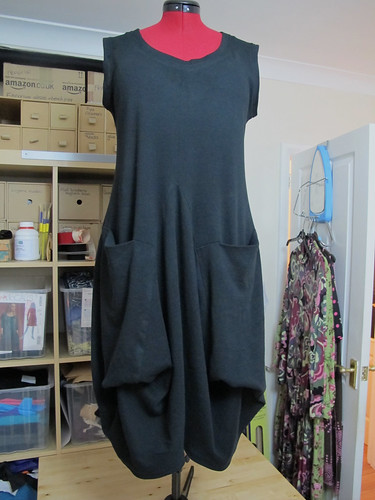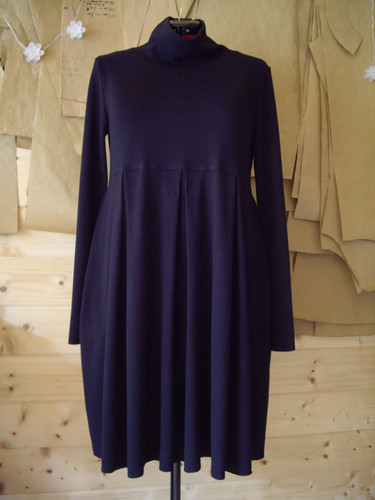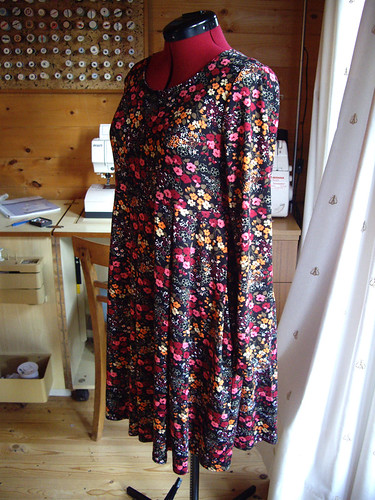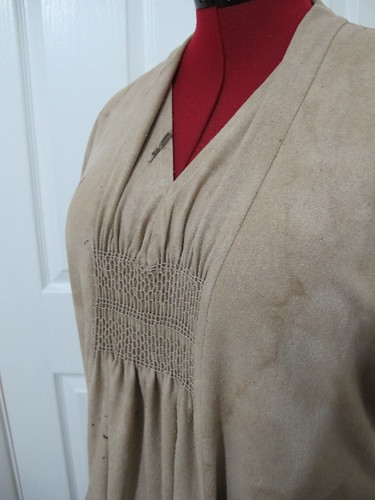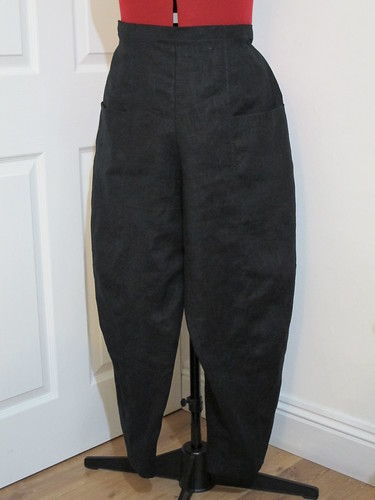No sooner had I blogged about Marcy Tilton’s new dresses than I found an online store with a sale, and bought both of the patterns! As you do…
I decided that I had just enough of my precious organic cotton Lorax fabric from eQuilter to make the Cirque dress (Vogue 9112), if I left off the collar. To be honest I would have left off the collar anyway, as it’s much easier to wear a necklace or a scarf with a flat neckline, and it was the shape of the rest of the dress that I was particularly drawn to.

Unfortunately I faltered at the first hurdle, which was finding a space big enough to lay the fabric out flat in a single layer in order to cut it out! Because every single piece is a different shape, nothing’s cut on the fold and duplicated, so you really do need to be able to lay out the pieces as shown. I tried the bed, but it made my husband nervous (let us not mention the Snipping Of The Duvet Cover incident from a few years ago) and it made my back hurt. Plus trying to cut on a squashy surface is very inaccurate, which is the last thing you need with a dress like this! I did eventually find success on the living room floor, but my back and knees were really not at all happy about it.
Once I’d got it to a state where it was try-on-able, I could see that it’s going to be a really great summer dress! I went down a size, as I often do with patterns that are generous in the waist and hips, so this is a Vogue/Marcy Tilton size M. It’s the tiniest bit tight across the shoulders when worn with a t-shirt underneath, but I need to make some minor alterations to the centre back seam anyway, so I can easily fix that next time around.
I made very few alterations to the pattern, as it was my first time making this dress, and I wanted to make sure that I understood it before I started messing about with it! I left off the collar, but that was very straightforward. I also changed the construction order very slightly, to attach the four pocket pieces before joining the front and back of the dress at the shoulders. It was just easier to manoeuvre it through the machine that way, and it made no difference whatsoever to the outcome of the dress.
The only other thing I did differently from the instructions was to sew the bottom hem and the neck and armhole bindings by hand, as I didn’t particularly fancy cream topstitching on this very multi-coloured fabric. It took a while, but the finish was worth it.
I’m not 100% convinced that these pale colours actually suit me very well (a difficulty of buying fabric online!), but I plan to wear this dress with an obnoxiously bright green long sleeve t-shirt underneath it, so I think it’ll look fine. I’m very pleased with the fit, and only plan to make two alterations next time. The first will be to curve the centre back seam to match the curve of my spine, and the second will be to cut away the armholes just a tiny fraction more at the front, and also raise them a little bit as they’re quite deep.
I wore this dress for a day of mooching about when my parents visited, and found it really comfortable to wear. The pockets are nice and big, I think the dress will be a great length to wear either with or without leggings underneath, and I have at least five pieces of fabric earmarked to make more! It seemed to fit together much more easily than the Marcy Tilton dresses I made last year, but it still has the lovely piecing and asymmetrical styling that I really like.
Top marks to this one, I can’t wait to sew it again!













